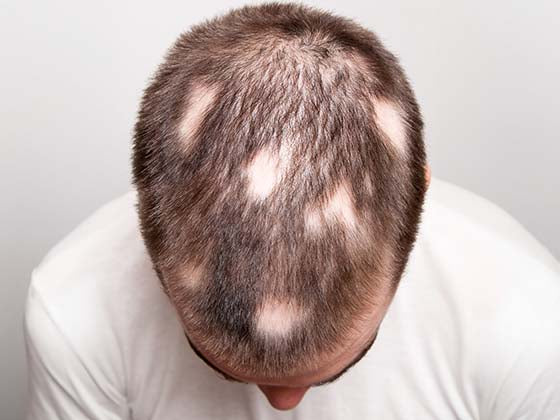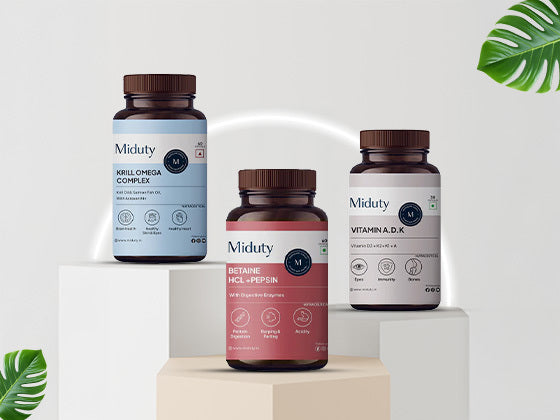- Working of PDT
- Types of PDT
- Benefits
- PDT for Acne
- PDT & Anti Ageing
- Managing Skin Conditions
- Follow Up Steps
- FAQs
Photodynamic therapy (PDT) is an innovative medical treatment that uses light energy to selectively destroy abnormal cells. This minimally invasive procedure involves the application of a photosensitizing drug to the affected area, followed by exposure to a specific wavelength of light. The photosensitizer absorbs the light energy, generating highly reactive oxygen species that effectively kill the targeted cells. Precancerous lesions, acne, and psoriasis are among the conditions that PDT has emerged to treat.
What Is Photodynamic Therapy and How Does It Work?

Photodynamic therapy (PDT) is one of the least invasive therapies that utilizes light energy and a photosensitizing drug to destroy abnormal cells such as cancerous cells. The targeted therapy is less invasive and has many benefits as compared to other traditional treatments like chemotherapy and radiation. It is a two-step process:
-
Administration of Photosensitizer: It involves Intravenous or topical administration of a light sensitive drug called a photosensitizer.
-
Light activation: After a particular time period, the treated region is exposed to a particular wavelength of light, normally from a laser.
Some applications of Photodynamic Therapy are:
-
Cancer therapy: PDT is used in the treatment of several cancers like skin, lung, bladder, and esophageal cancers.
-
Non-cancerous diseases: PDT can be used in the treatment of non-malignant conditions such as age-related macular degeneration, acne, and psoriasis.
Photodynamic Therapy advantages include:
-
Minimally invasive: PDT is usually an outpatient procedure with minimal discomfort.
-
Targeted therapy: The photosensitizer preferentially accumulates in the abnormal cells, causing little damage to the normal tissue.
-
Relatively fewer side effects: As an overall effect, PDT involves fewer side effects than many more traditional therapies.
-
Immunity response: PDT may further stimulate the immune system of the patient to attack such surviving carcinoma cells.
Photodynamic treatment is a promising treatment offered on an array of medical conditions due to its targeted and minimally invasive approach with potential benefits.
The Mechanism of Action: How Photodynamic Therapy Targets Skin Issues

PDT is an interesting treatment that exploits the energy of light to selectively destroy abnormal cells, particularly those in the skin. This is how it works:
1. Administration of photosensitizer:
A specific chemical, referred to as a photosensitizer, is applied to the area of the skin under treatment. This photosensitizer possesses a special characteristic: it selectively accumulates in abnormal cells, such as precancerous lesions or acne.
2. Activation through light:
After a given period of time, the affected region is irradiated with a particular wavelength of light, which is mostly from a laser. The light energy is absorbed by the photosensitizer.
3. Formation of ROS
The absorbed light energy excites the molecules of the photosensitizer. In the presence of oxygen, the excited molecules transfer their energy to the oxygen molecules to form very reactive oxygen species (ROS).
4. Cellular damage:
These ROS are highly harmful to cellular structures such as lipids, proteins, and DNA. They create oxidative stress that results in cell death (apoptosis) of the abnormal cells being targeted.
5. Blood Vessel Damage (Optional):
In some instances, PDT can also damage the blood vessels that feed the abnormal cells. This cuts off blood supply to the area and further limits the growth and survival of the abnormal cells.
With this understanding of the mechanism of action, you can appreciate how PDT offers a precise and effective approach to treating a range of skin issues.
Types of Photodynamic Therapy: What You Need to Know

There are two types of photodynamic therapy depending on the light source, and these are:
1. Conventional PDT:
It relies on a specific wavelength of light from a laser to activate the photosensitizer. This is the more commonly used type of PDT. It is applied for the treatment of cancer, acne, and precancerous skin lesions.
2. Daylight PDT:
This depends on natural sunlight to activate the photosensitizer.
This is less frequent but may be used for some skin conditions that demand a long time of exposure to light.
The method of PDT can also be categorized based on the route of administration of the photosensitizer:
-
Topical PDT: This is when the photosensitizer is applied topically to the skin.
-
Systemic PDT: In this, the photosensitizer is administered intravenously and spreads all over the body.
It should be kept in mind that the actual type of PDT to be administered would depend upon the ailment and individual patient condition. A doctor would prescribe the most appropriate course after taking these aspects into consideration.
Indications for Photodynamic Therapy: Conditions It Treats

PDT is a treatment modality that can be used for a variety of conditions, mainly in dermatology and oncology. Here are some of the common indications for PDT:
-
Skin Conditions:
-
Precancerous lesions:
-
Actinic keratosis (AK)
-
Skin cancer:
-
Early-stage basal cell carcinoma (BCC)
-
Superficial squamous cell carcinoma (SCC)
-
Benign skin conditions:
-
Acne
-
Psoriasis
-
Viral infections (e.g., herpes simplex, molluscum contagiosum)
-
Other Conditions:
-
Age-related macular degeneration (AMD)
-
Esophageal cancer
-
Lung cancer
-
Bladder cancer
-
Cervical cancer
-
Head and neck cancer
Notable is that suitability for PDT of a condition will depend on the severity of the condition, the health of the patient, and availability of the appropriate photosensitizer and light source. If you are thinking about using PDT as a treatment option, you should see a doctor to determine whether PDT is right for you.
The Benefits of Photodynamic Therapy for Skin Health

PDT is a revolutionary treatment which works through the help of light for various skin concerns. With the aid of a light-activated photosensitizer, PDT is highly efficient in destroying or eradicating abnormal or damaged cells within the skin. Among some of its key benefits include:
-
It Treats Acne: Through the killing of bacteria, reduction of oil glands, and inhibition of oil production, PDT has been helpful in minimizing the formation of acne.
-
Fight Sun Damage: It may improve the texture and tone of your skin by treating sunspots, age spots, and signs of photoaging.
-
Reduces Wrinkles: PDT stimulates collagen production, which means it gives smoother, firmer skin with lessened fine lines.
-
Treats Pre-cancerous Cells: PDT is used in the treatment of actinic keratosis (AK), which is a condition that could lead to skin cancer if not treated.
-
It improves the quality of skin texture and clarity making the skin look younger, fresher, and refreshed.
In general, photodynamic therapy is a totally non-invasive, potent treatment for improving skin quality, treating acne, sunburn, and even pre-cancerous conditions. It promotes healthful skin with minimal downtime hence becoming a popular choice when it comes to rejuvenating the skin.
Photodynamic Therapy for Acne: Effectiveness and Outcomes

Photodynamic Therapy (PDT) is an advanced therapy used where both the light and photosensitizer aim at reducing lesions that produce acne. The application is especially useful to patients whose lesions are moderate or severe with no response to standard drugs such as topical or oral therapies. The treatment controls acne, reducing it by attacking sebaceous glands, reducing the inflammatory states, and minimizing the microbial population residing on the skin. The treatments focus on the three leading causes of this condition:
-
Bacterial multiplication; the PDT kills the pathogenic bacterium causing this disease;
-
Excessive oil; PDT contracts the oil-producing glands minimizing the amounts produced.
-
Inflammatory states: the therapy moderates inflammatory conditions within the skin layer responsible for acne formation.
PDT for Treating Acne
-
It has been proven that PDT can effectively reduce the number of inflammatory and non-inflammatory acne lesions, including papules, pustules, and comedones. Studies showed that most patients observed a high reduction in the number of acne lesions following a couple of sessions.
-
Long-term Results: While PDT does offer significant improvement, results do vary. Some people have results that last a long time; others require maintenance treatments to keep the result. Generally, patients observe a reduction in acne symptoms that lasts for months following a course of treatments.
-
Combination with Other Therapies: PDT can be used in combination with other acne treatments (like topical retinoids or oral antibiotics) for enhanced results. This multi-faceted approach targets acne from different angles.
Outcomes of PDT for Acne:
-
Improvement in Acne Severity: Clinical studies and patients' testimonials often report a significant reduction in acne severity, with some people reporting clearer skin after several treatments. Depending on the type of acne, patients may experience up to a 50-80% reduction in acne lesions.
-
Minimal Downtime: Unlike some acne treatments (such as chemical peels or laser treatments), PDT usually involves minimal downtime. However, patients may experience some redness or mild swelling for a few hours to a day after the procedure.
Although many patients see improvements right away, maintenance sessions are often recommended to maintain the therapeutic benefits. The frequency of maintenance depends on the severity of the acne and may be needed every few months.
Photodynamic therapy can potentially be a solution for people suffering with acne, especially if the current treatments have failed. Since the treatment targets several underlying causes that lead to acne, PDT can give beneficial long-term results by significantly reducing lesions, controlling oil glands, and managing inflammation. Given the variability of the effect, PDT is an effective, state-of-the-art treatment for moderate to severe acne with minimal side effects and downtime. Patients should consult a dermatologist for an evaluation of their skin type and the severity of acne before deciding to undergo PDT.
Rejuvenating Effects: How Photodynamic Therapy Reduces Signs of Aging

Photodynamic therapy is a new skin treatment wherein light energy is used in reducing the signs of aging, such as fine lines and wrinkles, and age spots. Here's how it is done:
-
Basics of PDT: It involves a use of photosensitizing agent that, once applied on the skin, becomes activated upon contact with a particular wavelength of light. This interaction with the light initiates a chemical reaction in the agent that causes it to produce reactive oxygen species aimed at destroying the damaged cells.
-
Collagen Stimulation: One of the most effective stimulations of collagen through PDT in anti-aging medicine is its ability to produce a stimulation of collagen, thus giving skin its strength and elasticity. As we age, the production of this vital protein slows down; and as a result, wrinkles start to form due to sagging skin. By stimulating the production of healthy collagen, PDT can help rejuvenate the skin.
-
Another role of PDT in skin care is the reduction of pigmentation issues associated with age spots, sunspots, and uneven skin tones, often a result of aging. It breaks down excessive pigment within the skin.
-
Targeting Sun Damage: The sun causes aging due to breakdown of collagen and damages the skin. The use of PDT can target the damaged areas of the skin which contain visible signs of UV damage by improving the texture and tone.
-
Improved Texture of the Skin: By inducing regeneration of skin cells, along with an increase in collagen and elastin, the overall texture of the skin improves, making it smooth, firm, and young.
-
Minimal Downtime: Unlike more invasive procedures, PDT is minimally invasive, with little to no downtime. The skin may appear red or irritated post-treatment, but these side effects typically subside within a few hours to a couple of days, making it a convenient option for those seeking rejuvenation with minimal interruption to their daily routine.
In a nutshell, photodynamic therapy is an effective anti-aging treatment that rejuvenates the skin using light, reduces pigmentation, stimulates collagen, and brings back a youthful appearance without surgical invasion.
Managing Skin Conditions: Psoriasis, Rosacea, and More

Photodynamic Therapy is a treatment that uses light-sensitive compounds and light energy to treat a wide range of skin diseases, such as psoriasis, rosacea, and other skin issues. Here's how it works on these diseases and the benefits it provides:
1. Psoriasis
Psoriasis is an autoimmune condition in which the skin cells multiply rapidly, resulting in thick, scaly patches, mainly on the scalp, elbows, and knees. PDT can be used to treat psoriasis by targeting overactive skin cells with a photosensitizing agent, followed by the application of light to activate the compound. This process helps in reducing the rapid skin cell turnover, minimizing scaling and inflammation, and promoting healthier skin turnover.
In many instances, PDT may even help alleviate the itching, redness, and scaliness of psoriasis.
2. Rosacea
This is a chronic condition of the skin that brings about flushing and visible blood vessels confined to the face. With PDT, rosacea can also be treated since a certain photosensitizer can pinpoint the blood vessels, so when exposed to light, they constrict. That reduces:
-
Redness and flushing.
-
Visible blood vessels (telangiectasia).
-
Inflammation associated with rosacea.
PDT also decreases the general skin sensitivity thereby leading to long-term reduction in flare-ups.
3. Acne
For acne sufferers, PDT can be used as an alternative treatment. It aims at the overreacting sebaceous (oil) glands responsible for the production of acne. The photosensitizing agent penetrated through the skin and activated by light:
-
Kills the acne bacteria.
-
Decreases the inflammation.
-
Reduces the oil glands causing lesser outbreaks.
4. Actinic Keratosis (AK)
It is mostly used in the treatment of actinic keratosis-a condition resulting from the action of ultraviolet radiation leading to carcinoma. PDT works through destroying abnormal cells, stopping AK progression towards squamous cell carcinoma, and stimulating collagen production that results in healthy skin texture.
Photodynamic therapy is an effective and targeted treatment for various conditions of the skin, including psoriasis, rosacea, acne, and actinic keratosis. In PDT, the underlying cause of these conditions—abnormal cell growth or overactive oil production—is addressed to improve the appearance and health of the skin. This should be discussed with a dermatologist to decide whether PDT is appropriate for the specific condition of the skin.
What to Expect from the Photodynamic Therapy Experience

Photodynamic therapy (PDT) is a minimally invasive treatment that utilizes light energy to destroy abnormal cells.
-
Pre-Procedure:
-
Administration of Photosensitizer: A light-sensitive drug, also referred to as a photosensitizer, is applied to the target area or injected into your bloodstream. This drug preferentially accumulates in the abnormal cells.
-
Waiting Time: After administration of the photosensitizer, you may need to wait for a given period to enable it to accumulate in the target cells.
-
During the Procedure
-
Light Activation: The treated region is exposed to a particular wavelength of light, typically from a laser. This light energy activates the photosensitizer, which then produces extremely reactive oxygen species (ROS).
-
Cell Destruction: The ROS destroys the cellular components of the abnormal cells, hence killing them.
-
Post-treatment
-
Light Sensitivity: For a few days after the treatment, you may feel light sensitivity. Avoid direct sun exposure and bright indoor lighting.
-
Common Side Effects: The common side effects are redness, swelling, and some mild soreness at the treatment site. These should resolve in a few days.
-
Recovery: Most patients can return to normal life within a few hours after the procedure. However, post-treatment care should be followed according to the recommendations of the doctor.
Preparing for Your Treatment: Essential Steps to Follow

Here are some crucial pre-op steps to follow before your Photodynamic Therapy (PDT) procedure:
-
Tell your doctor about all medications and supplements you are taking: This includes prescription and over-the-counter drugs, vitamins, and herbal remedies. Some medications may interact with the photosensitizer used in PDT or increase your sensitivity to light.
-
Discontinue certain medications: In some cases, your doctor might ask you to stop taking particular medications, like blood thinners or drugs that increase photosensitivity for a period before the procedure.
-
Avoid sun exposure: Avoid sunlight directly for at least 48 hours before your procedure. Use protective clothing, sunscreen, and a wide-brimmed hat.
-
Avoid tanning beds: Do not use tanning beds or sunlamps for at least 48 hours prior to the treatment.
-
Preparation of the skin: Clean the treatment area with a fragrance-free, gentle cleanser the day of the procedure. Avoid using harsh soaps, scrubs, or other topical products.
-
Transportation: Because you will be photosensitive following the treatment, it is best to have someone drive you home.
-
Plan for light avoidance : After the procedure, one has to avoid the sunlight for a particular period. Arrange such activities in your daily schedule and use protective clothing and even sunglasses with sunscreen.
-
Ask all questions: Ask your doctor anything you would want to know about the procedure like recovery time, potential side effects post-treatment care, and whatever else.
-
Follow your doctor's instructions: Pay attention to all the instructions that your doctor gives you, including pre-procedure medications, skin preparation, and post-procedure care.
Keep in mind that these are general guidelines. Your doctor may have specific instructions based on your individual situation. It is important to follow their advice to get the best possible outcome.
Recovery and Aftercare: Ensuring Optimal Results

Here are some essential recovery and aftercare tips after having Photodynamic Therapy (PDT):
-
Immediate Post-Procedure:
-
Protect your skin: Avoid direct sunlight and bright indoor lights for at least 48 hours after the procedure. Wear protective clothing, a wide-brimmed hat, and sunglasses.
-
Clean the treated area: Gently clean the treated area with mild soap and water. Do not use harsh soaps, scrubs, or other skin products.
-
Moisturize: Use fragrance-free moisturizer on the treated area as needed to keep it hydrated.
-
Long-term care
-
Sun protection: Continue to protect your skin from the sun even after the initial recovery period. Wear sunscreen with a high SPF, protective clothing, and a wide-brimmed hat.
-
Avoid heat exposure: Avoid hot showers, saunas, and hot tubs for a few days after the procedure.
-
Monitor for side effects: Some common side effects may be redness, swelling, and mild discomfort. You must contact your doctor if you experience severe pain, blistering, or infection.
-
Follow-up appointments: Schedule follow-up appointments with your doctor to monitor your progress and address any concerns.
-
Additional Tips:
-
Be patient: Healing time may vary depending on the treated area and individual factors.
-
Do not pick at scabs or blisters: Let them heal naturally.
-
Drink water in abundance to help your body heal.
-
Be soft with your skin: Refrain from scrubbing the treated area too hard or rubbing it.
-
If any serious side effects or symptoms arise, you should call your doctor right away.
Personalized Recommendations and Future Directions in Photodynamic Therapy

Photodynamic therapy has thus emerged as a promising and highly versatile treatment modality. This drug combines light energy with a photosensitizing drug, meaning that it destroys abnormal cells without damaging their surrounding healthy tissue. Patients are attracted to this minimally invasive therapy's potential for long-lasting effects.
Still, further research and development will be needed to optimize PDT even further and to extend its applications. Personalized medicine approaches that are focused on individualized photosensitizers and light delivery systems can further improve outcomes while minimizing adverse effects. Further research into the possibility of combination therapies with other modalities, such as immunotherapy, may also bring synergy.
With the evolution of the field, PDT will likely increasingly be used in management of a wide variety of diseases and offers hope for patients and advances frontiers of medical science.
________________________________________________________________________









































